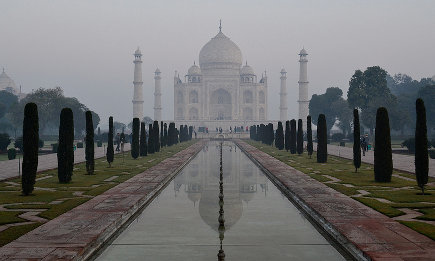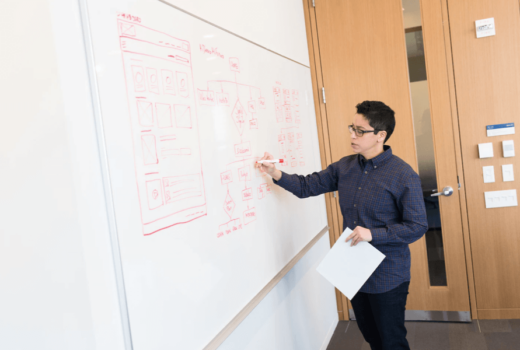India Kennisland

Op bezoek in de USA sprak de Indiase bewindsman voor de AAAS enzette zijn blik op de lange termijn daar uiteen.
‘Chavan outlined India’s remarkably ambitious investmentstrategy: Government spending on education will increase nine-foldin the current five-year plan, which ends in 2014. The nation plansto build and open 700 new colleges and universities. It is servingmillions of hot meals to students in impoverished areas in aneffort to stem high dropout rates. And it is pursuing ambitiousprograms to identify young scientists at an early age and providethem incentives to pursue careers in science.
Under the government of Prime Minister Manmohan Singh, “we arecompletely focused on transforming India through education, throughscience and technology, through innovation, and creating aknowledge economy,” Chavan said.
With China, India in the past decade has emerged as atransformational world economic power, with growth and developmentthat few would have imagined a generation ago-and it still hasenormous upside. In a 2 June talk, Chavan framed India’s effort asone that would improve the welfare of its 1.1 billion people whileworking with other nations to address global grand challenges suchas energy and public health.
Chavan is a member of the Rajya Sabha, the upper house ofIndia’s Parliament; in addition to his portfolio as minister ofstate for the ministries of science & technology and earthsciences, he also holds the important assignment as the minister ofstate in the Prime Minister’s office. He received his undergraduatedegree in mechanical engineering in India, and a master’s degree inengineering from the University of California at Berkeley.
The Partnership Between Government andBusiness
In Chavan’s view, India’s growth is the result of a decades-longhistorical process, and more recently, a conscious effort toliberalize the economy and develop its own human resources.
After getting independence from Great Britain in 1947, more than80% of India’s population was illiterate. The fledgling stateplayed a central role in the economy, Chavan said, owning andcontrolling infrastructure and transportation, social services,education, and health. That allowed India to lay the foundation ofa modern state, he explained, but as the years passed, it limitedeconomic growth.
In 1991, India made a series of decisions to liberalize theeconomy. A primary motivation, he said, was to avoid the riskeconomic collapse that was evident then in other closedeconomies.
Since then, the economy has soared, especially since 2004,Chavan said, when a coalition government led by the Indian NationalCongress party took office. Growth in Indian’s gross domesticproduct was running at an annual rate of over 8.5% until the globaleconomic crisis; growth dipped to 6.5%, but rebounded this year to8.5%. And the government expects the rate to hit 9%. Meanwhile therate of illiteracy has fallen to about 25%.
Still, Chavan said India must continue its transformation toaddress significant challenges. The economy is “no longer centrallycontrolled-no longer dependent on government for creating jobs oraiding backward areas,” he said. “We have moved away from thatmodel…. But even today, there are more jobs in the governmentsector than there are in the organized private sector.”
Currently, only less than a quarter of India’s annual researchand development spending comes from the private sector. Through taxbreaks and other measures, the government hopes to double that ratein the next five years.
Education: The Foundation for Prosperity
But the government has a crucial role in supporting thattransformation, especially in education, Chavan said. While Indianeducation has drawn a high proportion of students to engineering,the government has set the expansion of science education as apriority.
“The entire field of higher education, and primary and secondaryeducation, is undergoing a tremendous transformation, with aspecial focus on science,” he said. He characterized currentgovernment investment in education as “phenomenal.”
Over a 50-year period, the government helped create eight IndianInstitutes of Technology. In recent years, eight more have beenopened. Over the course of a century, India had one researchuniversity devoted to science, the Indian Institute of Science inBangalore. Since 2006, the government has opened five new IndianInstitutes of Science Education and Research. India currently hasabout 500 universities, but plans to open another 700.
Along with their ambitious bricks-and-mortar expansion, Indianeeds to focus on building human resources for science. A novelscholarship program called Innovation of Science Pursuit forInspired Research (INSPIRE) is working village-by-village toidentify students who show an aptitude for research, invention, andinnovation. With scholarships totaling $1 billion over the nextdecade, India hopes to support potential scientists from the age of14 or 15 and continuing through graduate school. The goal: 10,000new Ph.D scientists every year.
Chavan acknowledged that poverty poses continuing challenges inthis effort. “We still have a problem of extremely poor areas,” hetold the AAAS audience. “We still have a problem of extremelybackward regions where the fruits of modern education have notreached at all. And though we build schools, the percentage ofstudents who remain through high school stage is very low. There’sa huge dropout issue.”
To combat the dropout rate, and to identify potential scientistsamong the nation’s poorest families, India is providing 120 millioncooked meals every day in its schools. Chavan characterized it asthe biggest effort of its kind in the world.
At the same time, India is attempting to attract Indianscientists back from the United States and other nations to work inlaboratories and centers of excellence. That effort is having “ahuge response,” Chavan said. Chavan said that developing a corps ofscience teachers to support the science education campaign is “abig problem. We have put in place special programs that find goodscientists and convert them to be good teachers,” he explained.”But let me admit it frankly: It’s a very great challenge. In theshort run, there will be a problem.”
Grand Challenges: Energy, Food, and Water
Chavan characterized all of the government’s science educationinitiatives as necessary to support India’s ability to addresslong-term grand challenges. He identified grand challenges in threeareas: energy security, food security, and water. These are closelyinterrelated with challenges posed by climate change, health, andterrorism.
“There are many other challenges, but broadly these are the onesthat that would be tackled primarily through science, technology,and innovation,” he said. “We are putting in place systems whichwill address these grand challenges, and that is where were areseeking international collaboration to work together so that notonly will we work together for mutual benefit with ourinternational partners, but so that together we can find solutionsfor our common problems.”
The government of Prime Minister Manmohan Singh has establisheda national action plan for climate change, with an array of scienceand technology missions. For example, he said, the government isseeking “a whole new paradigm” in energy. It has a two-prongedapproach for developing alternative energy: It is providingsubsidies for home owners and businesses to use solar and otheralternative energy sources. At the same time, it has a massiveR&D agenda focused on energy, ranging from new materials forbatteries and photovoltaic cells to advanced transit systems.
The government also is working to understand and protect fragileHimalayan ecosystems, including the glaciers that provide thenation’s water, and re-doubling efforts to clean the nation’srivers. Such efforts have already produced close engagement withU.S. agencies such as NASA and the National Oceanic and AtmosphericAdministration (NOAA) and offers opportunities for vastly expandedcooperation.
Chavan expressed regret that much concern in the United Stateswas focused on U.S. firms’ outsourcing of work to India and othernations. Many studies have shown that U.S. and multinational firmsthat take advantage of India’s labor are making themselves morecompetitive in the global market, and perhaps preserving jobs athome. Instead, he said, the focus should shift to the mutualadvantages of cooperation.
The United States and India have much in common, he explained,and that creates a strong foundation for joint efforts. Both arelarge democracies, both share English as a common language, andboth have large markets with strong education systems andwell-trained workforces.
In Chavan’s view, that helps explain why over 750 multinationalcorporations have set up R&D centers in India, with a focus onintegrated chip design, circuit design, and other areas ofinformation technology. This makes India a center of technologyinnovation second only to Silicon Valley-and India may already havemore chip designers than the United States, he said. “I really amgrateful for the friends of India, who have placed great faith inour relationship,” Chavan concluded. “Together, we can make adifference not just to our people, but the entire human race, as weface these grand challenges.” ‘
Bron: www.aaas.org
Meest Gelezen
Vrouwen houden universiteit draaiende, maar krijgen daarvoor geen waardering
Wederom intimidatie van journalisten door universiteit, nu in Delft
‘Burgerschapsonderwijs moet ook verplicht worden in hbo en wo’
Raad van State: laat taaltoets nog niet gelden voor hbo-opleidingen
Hbo-docent wil wel rolmodel zijn, maar niet eigen moreel kompas opdringen



